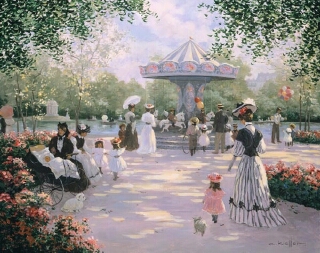
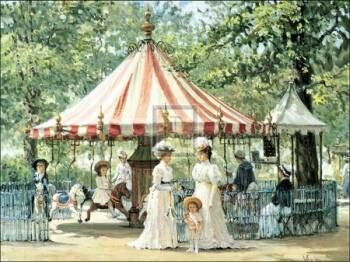
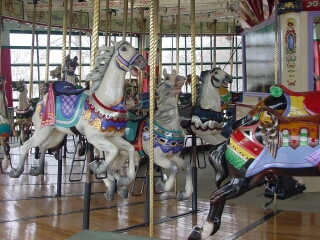
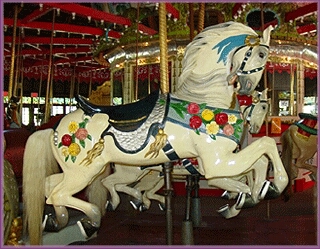
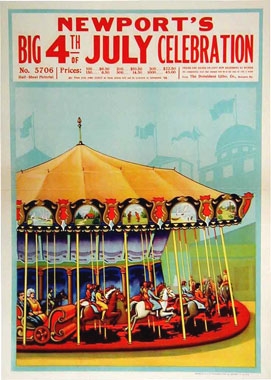
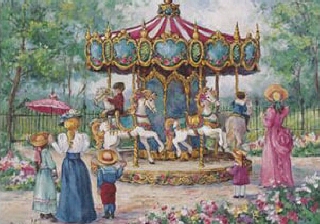
| The Carousel |
| I wasn't a very adventurous child, but what I lacked in courage, I made up for in imagination. It's easy to look back and see why the carousel (or "flying horses" as children in New Orleans usually called them) was my favorite amusement park ride. No danger involved, but minutes and minutes of pretend time! On that galloping horse, I could be Annie Oakley or Joan of Arc! By the time I was a teenager, it became a little embarrassing to head for the carousel, while all of my buddies were heading for the roller coaster. But, every visit to Pontchartrain Beach or City Park, I'd still sneak a ride, usually dragging my best friend, Mary Clare, along for moral support, both of us hoping nobody would recognize us among the 5-year-olds and their moms. :-) Finally, for a few years after my son was born, I had another lovely window of opportunity to enjoy the carousel to my heart's content. The City Park ticket-taker knew us by name! It's been quite awhile since I've visited a carousel, but I have the sounds and images stored in my memories, so I can "go for a ride" any time I'm in the mood to hear the Carousel Waltz. In fact, why don't we go today? Nancy |
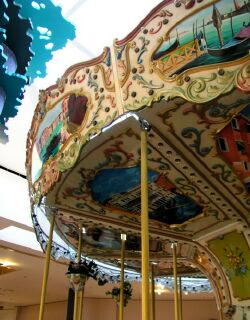


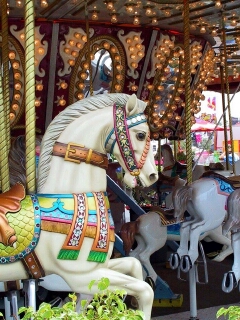
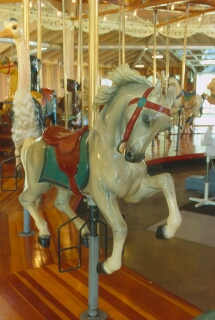
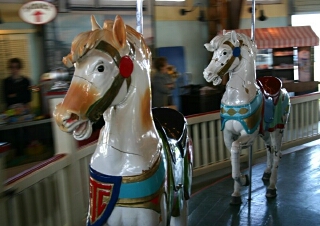
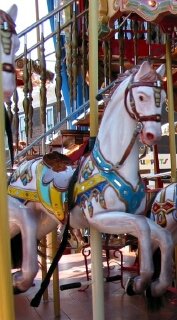

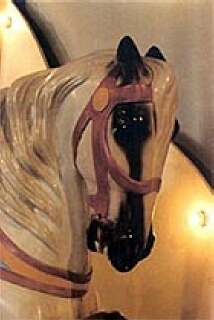
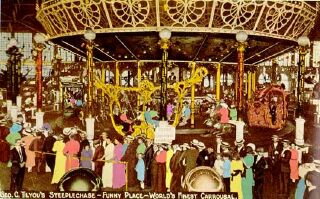
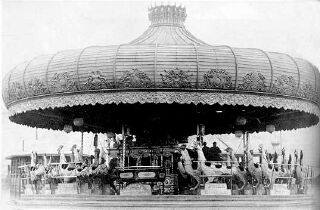
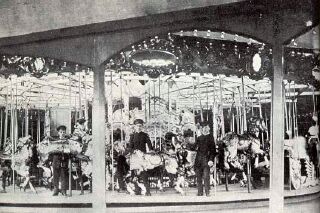
| The carousel, as we know it, was first invented in France in the late 1600's, when someone had the idea of hanging legless wooden horses from arms attached to a center pole. Young men trained for tournaments by riding these figures and attempting to spear small rings dangling along the edge of the device. (Ever wonder why we tried to catch the brass ring from a merry-go-round?) Over the next two centuries, the concept steadily evolved. However, it grew in popularity after 1870, when an English engineer developed a method of applying steam as a source of power, allowing for more riders. Below, left, the Chanticleer Carousel, imported from Europe, opened at Luna Park, Coney Island, in 1907 and was in operation there and, later, at Steeplechase, until 1964. The carousel on the right, made by Charles Looff, was installed at Feltman's Pavilion, Coney Island, in 1880, and burned in 1899. |
| The El Dorado Carousel, made in Germany, cost $150,000 in 1910. It had three tiers, 6,000 lights and rose 42 feet high. It remained in operation at Steeplechase, Coney Island, from 1910 - 1966. Badly damaged in a fire early on, it was restored and placed in the glass-enclosed "Pavilion of Fun" where it is pictured below. |
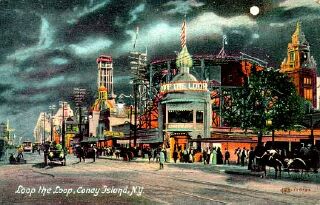
| Below, Coney Island, 1919 |
| 1940 Poster |
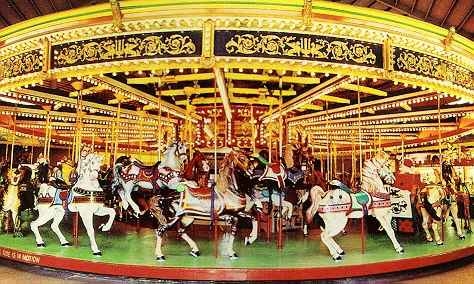
| In Europe, many thousands of vintage carousels survive. But the Golden Age of carousels in America is considered to have been from the mid-1800's to about 1930 and, of the thousands which were made during that time, sadly, only about 130 remain. Most have been lost to either fire or neglect, some broken apart and their individual pieces sold to art and antique shops for high prices. However, they are now recognized as an important art form, their elaborately hand-carved canopies and animals are, at long last, an accepted and respected form of American folk art. The carousel below, at Casino Pier, Seaside Heights, New Jersey, is still operating today. It was made in 1910 by Dentzell & Looff, but some of the animals go back to 1890. It's been in its current home since 1932. |
| The link to this page is: http://www.thepastwhispers.com/Carousel.html Music: Carousel |